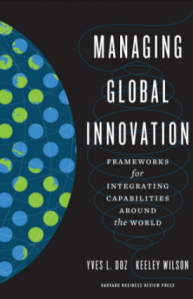When we ‘cast around’ we are looking for something; to try it out, to think about it, to search for connecting a vague idea with something more tangible. So let’s go innovation fishing.
The word ‘cast’ is around us in so many ways – anglers cast their line, we are cast adrift, we cast or drop anchor, we cast to put about, to tack, we cast our eyes upon the speaker, we cast light, we cast aspersions, we cast someone in a play, we cast a plan, we cast into a certain mould, are all just some of the many examples of how ‘cast’ is part of our everyday thinking.
In innovation, cast can become a fairly dominating action – we can cast about or around for ideas, to devise a plan, we can equally cast off those ideas or concepts we reject or simply cast out, or finally, we can agree to cast one’s lot into a plan or concept to take forward as a united team.
For me casting around is a most important part of how I work through innovation coaching. Continue reading “Casting-around with a wider innovation net.”

